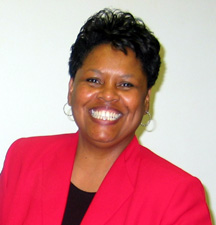 When I travel, I (like many people) engage in small talk with fellow travelers. The usual question is asked: “Where are you from?”
When I travel, I (like many people) engage in small talk with fellow travelers. The usual question is asked: “Where are you from?”
When I answer “Nebraska,” I get a number of responses: blank stare, surprised expression or the most frequent response, “How do you like it out there by yourself?”
This phrase really took me by surprise the first time I heard it. I was trying to understand the meaning of the question. Then it occurred to me. My new and temporary best friend was not assuming that I lived in a house geographically separated from my neighbors. He or she was addressing a much-held truism – that everyone in Nebraska is fair of skin and straight of hair. Being neither, I was (and continue to be) an anomaly, a deviation from the Nebraska norm as contained in their minds.
So, what does that say about people outside (and inside) of Nebraska? What is at the heart of the assumption that I’m out here “by myself?” Many people are unaware of the actual diversity of our state and even more are surprised about the diversity of the metropolitan area.
According to the 2000 census, the demographic makeup of the city is 78.39 percent white, 13.31 percent African American, 0.67 percent Native American, 1.74 percent Asian, 0.06 percent Pacific Islander, 3.91 percent from other races, 1.92 percent from two or more races and 7.54 percent of the population are Hispanic or Latino of any race. So, out of the nearly 400,000 people living in Omaha, almost 50,000 are African American. Hardly lives up to the description of “by myself.”
The numbers from the census do little to describe the true diversity of the city, with people from all over the world living and working in our fair city. Information from Omaha Public Schools shows that about 50 percent of students are considered “minority,” 5,600 of the 100,000-plus students speak 43 different languages. The top seven languages are:
- English;
- Spanish;
- Nuer (a language of Sudan);
- Arabic;
- Mandarin (a language of China);
- Hmong (a language of a cultural group from a variety of countries including South China, Vietnam, Laos, Burma and Thailand).
So, what does this have to do with those of us who are involved in providing health care to the people of the metro? It means we have to be aware of the changes around us and be aware of the need to learn new skills to provide safe, efficient and effective care. Whether the challenge is for providing care to folks who have lived here all along or for knowing what is necessary to provide care to our newest residents – we need the skills, the knowledge, the structure, the policies and procedures to do just that. I surely don’t want to be “by myself” (and I know I am not) in trying to assess and implement best practices in such a challenging environment.
So, let us all come together to make sure that no one who enters our doors feels like they are here “by themselves.” Let’s make sure that each person, whether born here, attending school here, visiting the city or passing through, feels good about being here.